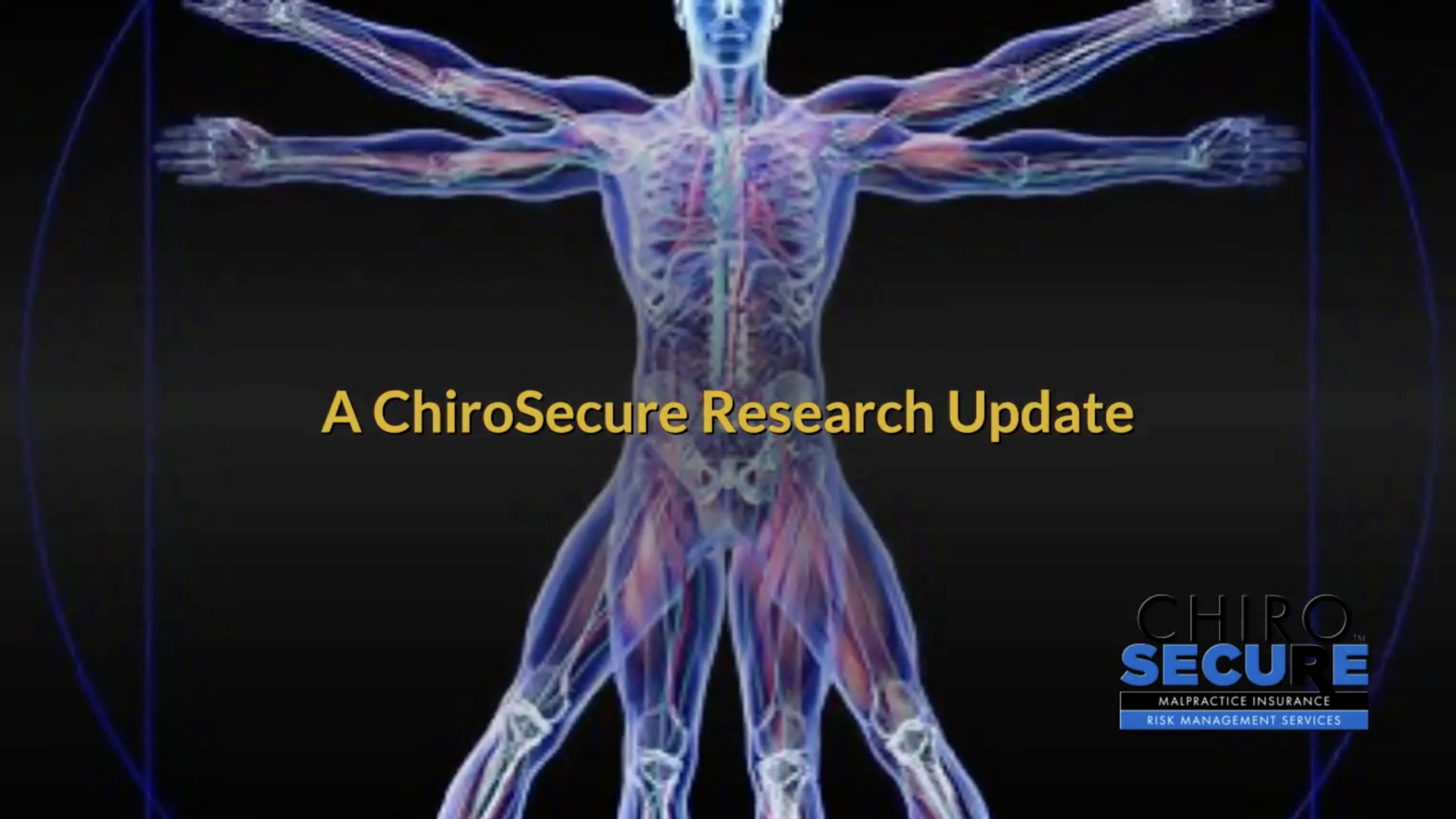Title:
Comparison of Spinal Manipulation Methods and Usual Medical Care for Acute and Subacute Low Back Pain
A ChiroSecure Research Update
Abstract:
A randomized controlled trial with follow-up to 6 months.
This was a comparative effectiveness trial of manual-thrust manipulation (MTM) versus mechanical-assisted manipulation (MAM); and manipulation versus usual medical care (UMC).
Discussion:
A total of 107 adults with onset of LBP within the past 12 weeks were randomized to 1 of 3 treatment groups: MTM, MAM, or UMC. Outcome measures included the Oswestry LBP Disability Index (0–100 scale) and numeric pain rating (0–10 scale). Participants in the manipulation groups were treated twice weekly during 4 weeks; subjects in UMC were seen for 3 visits during this time. Outcome measures were captured at baseline, 4 weeks, 3 months, and 6 months.
Linear regression showed a statistically significant advantage of MTM at 4 weeks compared with MAM (disability = −8.1, P = 0.009; pain = −1.4, P = 0.002) and UMC (disability = −6.5, P = 0.032; pain = −1.7, P < 0.001). Responder analysis, defined as 30% and 50% reductions in Oswestry LBP Disability Index scores revealed a significantly greater proportion of responders at 4 weeks in MTM (76%; 50%) compared with MAM (50%; 16%) and UMC (48%; 39%). Similar between-group results were found for pain: MTM (94%; 76%); MAM (69%; 47%); and UMC (56%; 41%). No statistically significant group differences were found between MAM and UMC, and for any comparison at 3 or 6 months.
Conclusion:
Manual-thrust manipulation provides greater short-term reductions in self-reported disability and pain scores compared with usual medical care or mechanical-assisted manipulation.
Reference:
Schneider, M., Haas, M., Glick, R., Stevans, J., & Landsittel, D. (2015). Comparison of spinal manipulation methods and usual medical care for acute and subacute low back pain: a randomized clinical trial. Spine, 40(4), 209–217. https://doi.org/10.1097/BRS.0000000000000724.






